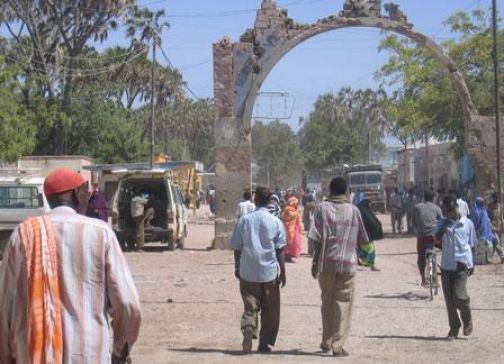The past week has seen fierce fighting all over Somalia, but particularly near the city of Beledweyne, as AMISOM and Somali troops face stiff Shabaab resistance in multiple theaters.
Since The Long War Journal‘s report on fighting in and around Beledweyne on Nov. 25, attacks in the region have escalated again. AMISOM troops and Somali soldiers had made a sustained effort to wipe out the Shabaab presence in the area, and seemed to inspire enough confidence that even Hiran pastoralists attempted to fight off Shabaab militants who were stealing their livestock.
But Shabaab fighters have been no pushovers: on Dec. 4, Shabaab fighters again attacked an AMISOM base outside of Beledweyne, exchanging heavy artillery fire with AMISOM troops. Although there were casualties on both sides, Shabaab was eventually forced to retreat.
Over the weekend, one Djiboutian AMISOM soldier was killed and three were wounded in the area while trying to defuse undetonated RPGs, probably left over from the Dec. 4 attack.
Djiboutian soldiers were killed in the Shabaab suicide assault in Beledweyne in November that spurred the current AMISOM offensive into action.
Ethiopian troops have also entered the fray
There has been increased troop presence as a result of the arrival of Ethiopian troops in Somalia. Ethiopian heavy armor and infantry have moved into the town of El Barde in Bakool, but have come under attack near Beledweyne as Shabaab ambushed Ethiopian and Somali troops stationed near the airport.
Shabaab troops in the Beledweyne area seem to have no problem gaining access to heavy weapons, as they were used in the attack. As Dilla Press reports, Shabaab militants “launched rocket propelled grenades and opened machine guns in a planned ambush against allied forces at the outskirts of Baladweyne airport, sparking fierce clashes that raged for several hours.”
In Gedo, Somali national army and Ahlu Sunna fighters launched a joint offensive against Shabaab bases south of Garbaharey. This is noteworthy given that Ethiopian troops were compelled to move into Gedo in October to stop Somali troops and Ahlu Sunna fighters from fighting each other.
Despite a military offensive led by the African Union and backed by the US that began in 2011, Shabaab still controls vast areas of southern and central Somalia. During the offensive, Shabaab was driven from major cities and towns such as Mogadishu, Kismayo, and Baidoa, but towns such as Bulobarde and Barawe remain under the terror group’s control. The group has weathered the Ethiopian invasion, which began in December 2006 and ousted its predecessor, the Islamic Courts Union. More than six years later, Shabaab remains a capable force in southern Somalia and an integral part of al Qaeda’s global network.
Are you a dedicated reader of FDD's Long War Journal? Has our research benefitted you or your team over the years? Support our independent reporting and analysis today by considering a one-time or monthly donation. Thanks for reading! You can make a tax-deductible donation here.









5 Comments
It seems like Somalia will always be fighting.
Hi
Good Posting,
Thanks
Where does their money come from ?
Aloysius…
Try piracy…
Their stash will last years on end.
Dan, an old Somalian proverb goes something like this:
What do you have when two Somalis get together? – An argument.
Three? – A fight.
Four? – A riot.